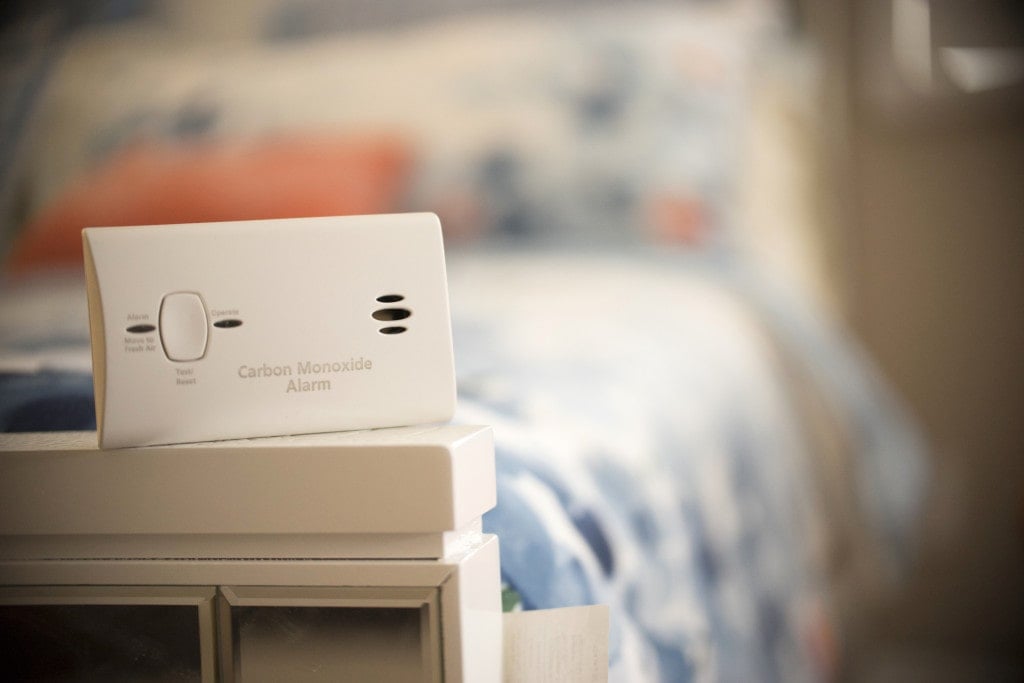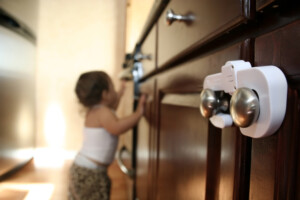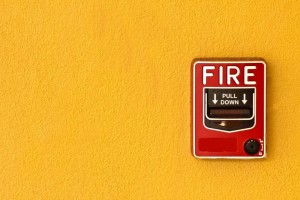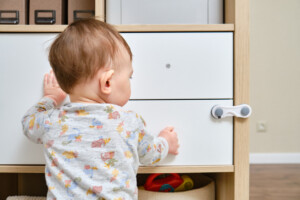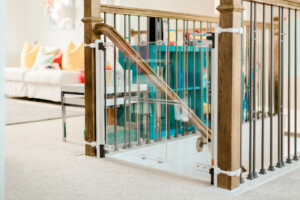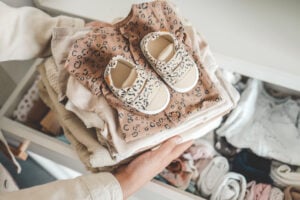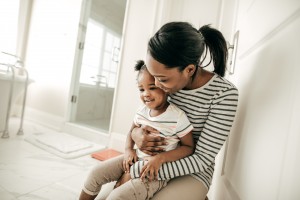Do you have a carbon monoxide detector (CO detector) installed in your home? Many families don’t even realize that a smoke detector differs from a carbon monoxide alarm. But it is just as important!
According to the CDC, every year, at least 430 people in the U.S. die from accidental carbon monoxide poisoning.1 And approximately 50,000 people in the U.S. visit the emergency department each year due to accidental CO poisoning. These accidental incidents could likely be avoided by implementing one small piece of equipment into their homes: a carbon monoxide detector.
What is carbon monoxide?
Carbon monoxide is an odorless, colorless gas produced from the incomplete burning of natural gas or other products containing carbon.2 Generally, carbon monoxide exposures peak during the winter due to families running their heaters or furnaces to keep warm within an improperly ventilated home. Because it is an odorless and colorless gas, most individuals don’t even realize they’ve been exposed until they see signs or symptoms.
Why is CO so dangerous?
Simply put, breathing in carbon monoxide can prevent the body from using oxygen appropriately.3 In other words, it displaces the amount of oxygen in your blood as it’s unable to bind to the body’s hemoglobin. That leads to other vital organs like your heart and brain being deprived of the oxygen they need to function optimally.
Dr. Jonathan Barney (PGY-1 surgical resident who was recently featured on Board Vitals as one of the TOP 50 Doctors to follow) explains it like this: “Imagine if you’re trying to take a bus to get somewhere in a hurry, but every bus that pulls up to the curb is already filled to the brim with passengers — none of whom are getting off. In this way, oxygen cannot get where it needs to be. If uncorrected, this leads to life-threatening hypoxemia (lack of oxygen in the blood).”
However, oxygen isn’t the only system affected by carbon monoxide exposure. Dr. Barney explains that it can also lead to life-threatening conditions such as metabolic acidosis, ventricular arrhythmias, and even elevated clot formation(s).
Signs and symptoms of exposure to carbon monoxide:
- Headache
- Dizziness
- Weakness or clumsiness
- Chest pain
- Nausea and vomiting
- Fast or irregular heartbeat
- Shortness of breath
- Confusion
- Loss of consciousness or coma
- Loss of hearing
- Blurry vision
- Seizures
- Cardiac arrest
- Respiratory failure
- Sometimes, cherry “red lips” (from flushing)
It’s essential that the minute you notice or suspect you or your child have been exposed to carbon monoxide, you get medical attention at once. Because of the quick onset of oxygen deprivation when carbon monoxide exposure occurs, one of the main treatments includes quickly getting you or your child the oxygen they need.4
How does carbon monoxide affect babies?
According to the American Association of Pediatrics, infants and children have an increased susceptibility to carbon monoxide toxicity because of their higher metabolic rates. Dr. Barney adds that “carbon monoxide is especially dangerous to children in utero, as CO crosses the placental barrier and binds to fetal hemoglobin with greater affinity than maternal hemoglobin. That coupled with the fact that fetal hemoglobin has a longer half-life than maternal hemoglobin means that concentrations can become higher, faster.” 5
In other words, infants and children (including children in utero) are more susceptible to lower carbon monoxide levels than grown adults. Plus, infants and young children may be unable to tell you when they aren’t feeling well. For example, if an infant is experiencing a tight chest, you most likely won’t know or see it until it becomes critical.
These are all the more reasons to make sure your home is properly equipped with carbon monoxide detectors to prevent these scenarios from happening.
How do I prevent CO poisoning?
The BEST way to prevent carbon monoxide poisoning is to educate yourself on what causes it in the first place. Then, have your carbon monoxide detectors installed throughout your home. However, just mounting a detector in a few spots won’t work.
Similar to how smoke rises (which is why you mount your smoke detectors high on the walls), carbon monoxide has its chemical properties, making it hang out elsewhere in the room. Hence, knowing WHERE to install them (covered below) is very important.
What causes carbon monoxide in the home?
As mentioned earlier, carbon monoxide is a toxic gas. The most common household items that create this gas are:
- Oil and gas furnaces
- Generators
- Stove/gas range
- Gas line leaks
- Water heaters (gas)
- Clothing dryers (gas)
- Space heaters
- Motor vehicles
- Various gas power tools
Please know that using the above items does not mean you’re doomed to be exposed to carbon monoxide. However, there are certain precautions you should take to ensure you and your family are living safely during their use.
These preventative precautions consist of the following:
- Keeping all air vents & flues cleaned out of any debris that can obstruct ventilation.
- Have any gas or coal-burning appliances (including your water heater or central heating system) serviced by a qualified technician once a year.
- NEVER use a charcoal grill or camping stove inside your home.
- NEVER leave your car or truck running inside your garage or any fully enclosed or semi-enclosed space.
How do I buy and install a CO detector?
In general, as long as you follow the US Consumer Product Safety Commission’s recommendation for installation, you’re good to go.6 On top of their recommendations, I turned to my husband. He’s a Firefighter Medic and works on the Hazardous Materials Team at one of the country’s largest fire departments. Going on CO alarm calls and helping to educate the public on this subject is something in which he’s exceptionally well versed.
When buying and installing a CO detector for your home, follow these guidelines:
- If you can, it’s preferable (and more reliable) to use a standalone CO2 detector (not the combination smoke alarm/CO combo units).
- Plan to have at least one CO detector for each floor in the home and your garage.
- Install them approximately at shoulder height along the wall. This is typically where the gas likes to settle and will set off your alarm.
- You’ll also want to install them in common areas (like bedrooms or sleeping areas), especially if you have gas appliances in or near the room.
- Rule of thumb — change out the batteries during each daylight savings switch.
When in doubt, always refer to the instruction manual that comes with your CO Detector.
What should you do if your carbon monoxide alarm goes off?
Knowing what to do if your alarm goes off is part of preventing carbon monoxide poisoning. Of course, the classic piece of advice: don’t panic!
The next thing to do is evacuate the home. Then, get into an open space with fresh air and call 9-1-1. After you’ve been treated, it’s always recommended to replace the batteries in your detector to ensure it’s ready for use again.
For more information on carbon monoxide poisoning, visit the CDC’s FAQ page.













